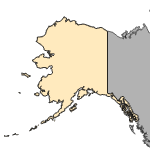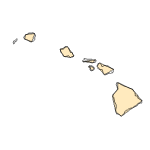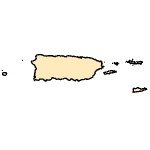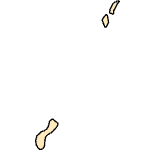Coregonus albula
(vendace)
Fishes
Exotic |
|
Common name: vendace
Synonyms and Other Names: (kleine maräne, dwarf white fish, coregoni piccoli).
Taxonomy: available through
www.itis.gov
Identification: Wheeler (1969); Ladiges and Vogt (1986). The taxonomy and systematics of Coregonus is particularly problematic. Some of the confusion is the result of the many early introductions and transplants of the various species and populations within Europe and elsewhere (e.g., Leviton 1996). Furthermore, the reportedly frequent hybridization between related Coregonus species also has contributed to the taxonomic confusion. Many ichthyologists (e.g., Berg 1948) have historically recognized only a few widespread, polytypic species of Coregonus (including C. albula) across Europe. Recently, Kottelat and Freyhof (2007) recognized 59 species of Coregonus.
Size: 35 cm.
Native Range: Northern Europe, northern parts of the former USSR, the Baltic and North Sea basins, and the Swiss Alps (Ladiges and Vogt 1986; Leviton 1996).



|

Alaska |

Hawaii |

Puerto Rico &
Virgin Islands |

Guam Saipan |
Hydrologic Unit Codes (HUCs) Explained
Interactive maps: Point Distribution Maps
Nonindigenous Occurrences:
Table 1. States with nonindigenous occurrences, the earliest and latest observations in each state, and the tally and names of HUCs with observations†. Names and dates are hyperlinked to their relevant specimen records. The list of references for all nonindigenous occurrences of Coregonus albula are found here.
Table last updated 11/25/2024
† Populations may not be currently present.
Means of Introduction: Several shipments of eggs, originally identified as coming from Coregonus albula, were imported from Germany by the U.S. Fish Commission in the 1880s. The Commission instructed C. G. Atkins to hatch the eggs in captivity; all or most of the surviving young were later released into the two Maine lakes (e.g., Smiley 1885). Intentionally stocked, this species was apparently seen as a potential food fish.
Status: The introductions failed (Kendall 1914).
Impact of Introduction: The impacts of this species are currently unknown, as no studies have been done to determine how it has affected ecosystems in the invaded range. The absence of data does not equate to lack of effects. It does, however, mean that research is required to evaluate effects before conclusions can be made.
References: (click for full references)
Baird, S.F. 1889. Report of the Commissioner for 1886. Part XIV. U.S. Commission of Fish and Fisheries, Washington, D.C.
Bean, T.H. 1892. Observations upon fishes and fish-culture. Bulletin of the U.S. Fish Commission 10:49-61.
Berg, L. S. 1948-1949. Freshwater fishes of the U.S.S.R. and adjacent countries, 4th edition. Three volumes. Translated from Russian, 1962-1965, for the Smithsonian Institution and the National Science Foundation, by Israel Program for Scientific Translations, Jerusalem, Israel. Volume 1:504 pp.; volume 2:496 pp.; volume 3:510 pp.
Kendall, W.C. 1914. An annotated catalogue of the fishes of Maine. Proceedings of the Portland Society of Natural History 3:1-198.
Kottelat, M., and J. Freyhof. 2007. Handbook of European freshwater fishes. Publications Kottelat, Cornol, Switzerland.
Ladiges, W., and D. Vogt. 1986. Guida dei pesci d'acqua dolce d'Europa. Franco Muzzio & Co Editore, Padova, Italy.
Smiley, C.W. 1885. Notes upon fish and the fisheries. Bulletin of the U.S. Fish Commission 5:465-469.
Todd, T.N. 1983. The feasibility of mass-culturing coregonines in the Great Lakes. Research completion report, U.S. Fish and Wildlife Service, Ann Arbor, MI.
Wheeler, A. 1969. The fishes of the British Isles and north-west Europe. Michigan State University Press, East Lansing, MI.
FishBase Summary
Author:
Pam Fuller, and Leo Nico
Revision Date: 2/29/2012
Peer Review Date: 2/29/2012
Citation Information:
Pam Fuller, and Leo Nico, 2024, Coregonus albula (Linnaeus, 1758): U.S. Geological Survey, Nonindigenous Aquatic Species Database, Gainesville, FL, https://nas.er.usgs.gov/queries/factsheet.aspx?SpeciesID=885, Revision Date: 2/29/2012, Peer Review Date: 2/29/2012, Access Date: 11/25/2024
This information is preliminary or provisional and is subject to revision. It is being provided to meet the need for timely best science. The information has not received final approval by the U.S. Geological Survey (USGS) and is provided on the condition that neither the USGS nor the U.S. Government shall be held liable for any damages resulting from the authorized or unauthorized use of the information.